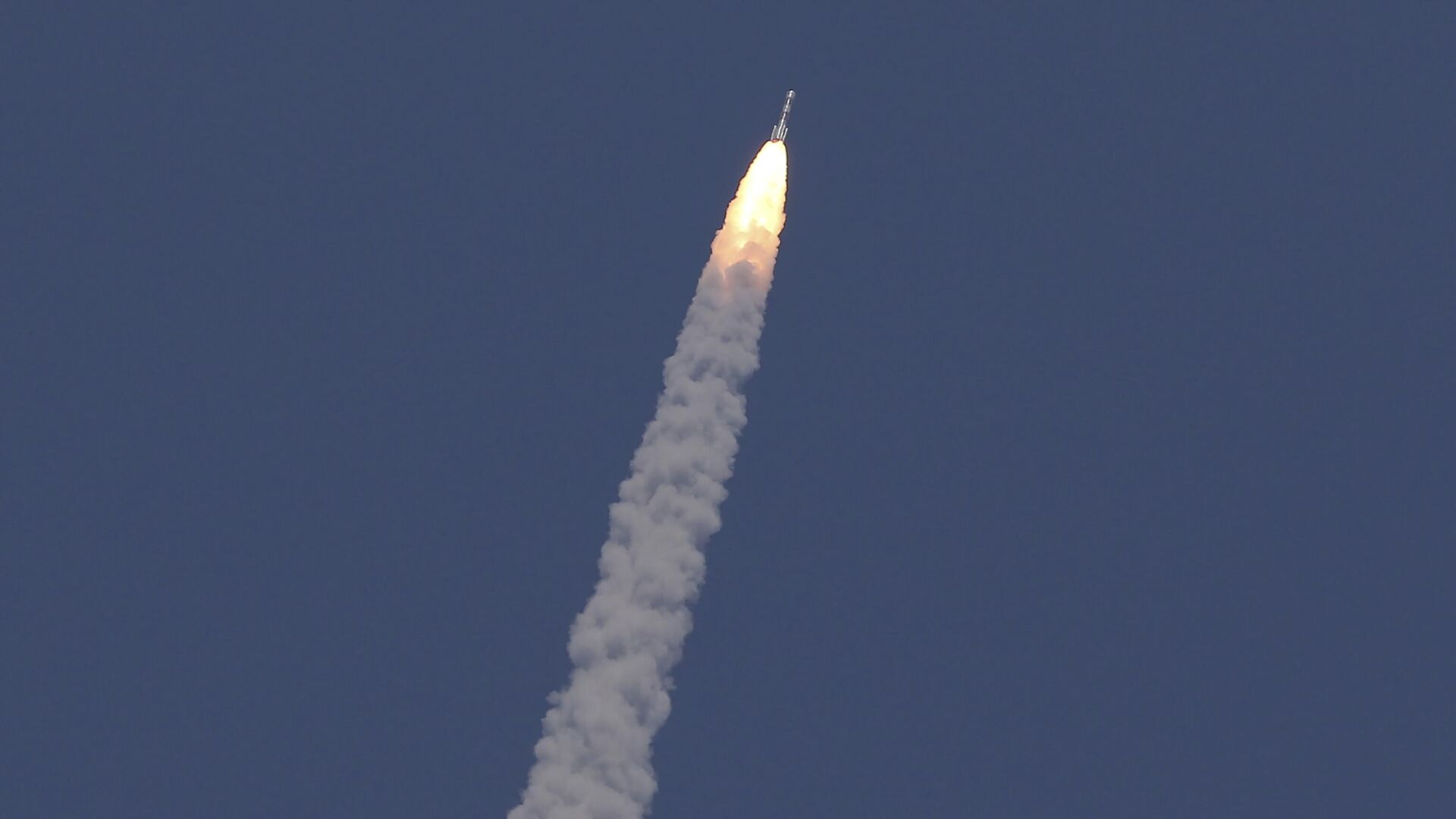https://sputniknews.in/20231223/aditya-l1-solar-mission-to-reach-lagrange-point-destination-on-6-january-isro-5940839.html
Aditya-L1 Solar Mission to Reach Lagrange Point Destination on 6 January: ISRO
Aditya-L1 Solar Mission to Reach Lagrange Point Destination on 6 January: ISRO
Sputnik India
Indian solar space station the Aditya-L1 will reach the final point of its mission (Lagrange point L1) on 6 January, from which it will observe the celestial body.
2023-12-23T14:57+0530
2023-12-23T14:57+0530
2023-12-23T14:57+0530
science & tech
science & tech
moon
india
indian space research organisation (isro)
aditya-l1 mission
space satellite
space industry
space exploration
https://cdn1.img.sputniknews.in/img/07e7/0c/17/5939643_0:0:3072:1728_1920x0_80_0_0_2ceb6fb97623ccc9d5d6a6959d5d7e2b.jpg
Indian solar space station the Aditya-L1 will reach the final point of its mission (Lagrange point L1) on 6 January, from which it will observe the celestial body, the head of the Indian Space Research Organisation (ISRO), Sridhara Somanath, told reporters.Once the device is successfully installed at L1, it will remain there for the next five years, collecting data that is important not only for India, but also for the whole world, the ISRO chief explained. The Aditya-L1 was launched into Earth orbit on 2 September. After almost three weeks, the device was transferred to the trajectory of the path to Lagrange point L1, which is located 1.5 million km from Earth. In the Sun-Earth system, Lagrange point L1 is an ideal location for a space station to observe the Sun. In this location, it is never blocked by either the Moon or the Earth.
https://sputniknews.in/20231220/indias-aditya-l1-spacecraft-expected-to-reach-lagrange-destination-early-january-5903787.html
moon
india
Sputnik India
feedback.hindi@sputniknews.com
+74956456601
MIA „Rossiya Segodnya“
2023
Sputnik India
feedback.hindi@sputniknews.com
+74956456601
MIA „Rossiya Segodnya“
News
en_IN
Sputnik India
feedback.hindi@sputniknews.com
+74956456601
MIA „Rossiya Segodnya“
Sputnik India
feedback.hindi@sputniknews.com
+74956456601
MIA „Rossiya Segodnya“
aditya-l1 solar mission, aditya-l1, indian solar mission, indian space research
aditya-l1 solar mission, aditya-l1, indian solar mission, indian space research
Aditya-L1 Solar Mission to Reach Lagrange Point Destination on 6 January: ISRO
India launched its first solar mission, the Aditya-L1, on 2 September. The mission aims to help scientists get a grasp on the upper layers, chromosphere, and corona of the Sun.
Indian solar space station the Aditya-L1 will reach the final point of its mission (Lagrange point L1) on 6 January, from which it will observe the celestial body, the head of the Indian Space Research Organisation (ISRO), Sridhara Somanath, told reporters.
"Aditya-L1 will enter L1 on January 6," he said, adding that "the exact timing will be announced at the appropriate time." "When it reaches the L1 point, we will have to start the engine again to prevent it from moving further", Somanath said.
Once the device is successfully installed at L1, it will remain there for the next five years, collecting data that is important not only for India, but also for the whole world, the ISRO chief explained.
“This data will be very useful for understanding what is happening on the Sun and how it affects our lives”, he emphasised.
The Aditya-L1 was launched into Earth orbit on 2 September. After almost three weeks, the device was transferred to the trajectory of the path to Lagrange point L1, which is located 1.5 million km from Earth. In the Sun-Earth system, Lagrange point L1 is an ideal location for a
space station to observe the Sun. In this location, it is never blocked by either the Moon or the Earth.


